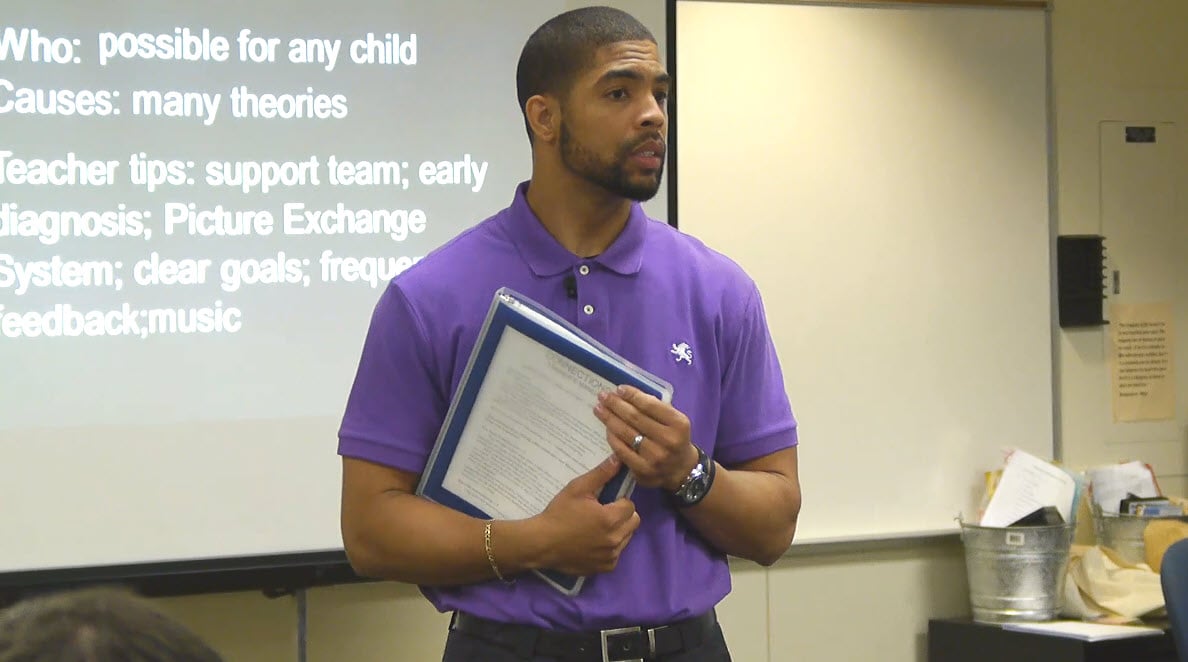



You may be surprised to know that you don't have to go back to a four-year college to change careers.
If you’re considering entering the teaching profession, there is another way to accomplish this goal … obtaining a teaching credential. But what is a teaching credential, and how do you get one?
A teaching credential allows you to legally become a classroom teacher. It takes into consideration your real-world career experience and degree, significantly reducing the amount of time it would typically take to get a teacher's license versus obtaining another four-year degree in education.
Once credentialed, you'll be no different from teachers who went the "straight out-of-school" teacher route, except you've got the real-world experience they may not have. Your refreshing perspective is needed in the classroom.
If you’re thinking about what it takes to inspire the next generation of students in the classroom, you're ready to explore teaching opportunities. Here’s what you need to know about earning your teaching credential, and why it’s important to get your teaching credential NOW due to new testing requirements.
Teacher credential programs provide you with the training you need to plan and manage a classroom confidently.
In the state of Texas, you can complete an educator preparation program (EPP), also known as an alternative teaching certification program or teacher preparation program, to earn your credentials.
During the program, you'll acquire 300 hours of training to get a teaching certificate, of which 30 hours will be mentor-observed classroom teaching time. Note: According to Texas Administrative Code, prior degrees, military service, paid work experience and specific training may count toward this total.
The benefits of becoming a teacher through a certification program include:
While some teaching credential programs are fully online, some offer a hybrid of online instruction and in-person training. The latter offers the best of both worlds, providing you with a flexible schedule for your courses while offering the opportunity for in-person training that can’t be replicated through online classes.
To qualify for an educator preparation program, you need:
While many students who enter a teaching credential program have completed their bachelor's degree and have been working in the field, many careers don't require a bachelor's degree. Instead, you learn on the job.
If you have not yet earned your degree, you still have options if you are currently working in the Criminal Justice, Automotive, Cosmetology or Culinary Arts areas.
Once accepted into an EEP, it’s now time to complete your program. Your training will focus mostly on how to teach, facilitate learning and manage a classroom. Here are additional requirements you must meet.
To earn your teaching credential, you must pass this list of Texas teacher certification tests. What you must take will depend on which subject matter you wish to teach.
IMPORTANT NOTE ABOUT TESTING REQUIREMENTS: If you are considering becoming a teacher, now is the time to complete your teacher education program. The Texas State Board for Educator Certification recently adopted a new requirement that aspiring educators must meet before becoming certified. Instead of taking the PPR, teaching candidates will be required to complete the edTPA. (The requirement to take edTPA in place of the current PPR test is currently set for the 2023-24 school year)
Unlike the PPR, the edTPA is not a one-time exam. Instead, the edTPA requires that student interns prepare a portfolio of materials during their learning experiences, primarily their student teaching internships where they work directly with students.
Now and during the 2022-23 school year, teaching candidates will have the option of either taking the PPR or choosing the edTPA assessment. During the 2023-24 school year, teaching interns must incorporate the edTPA assessment into their certification requirements. Beginning with the 2024-25 school year, the TEA will implement a new cut score.
It has not been finalized yet whether you will have only one chance to attain a mark above this cut score. There is a chance that if you do not achieve the cut score the first time, despite your training, you will not earn your certification.
Texas Certification Programs, like ECAP, train the intern in completing their portfolio using real data and video, yet the intern cannot be assisted while creating their final submitted portfolio. This means that each candidate will have to actually go through the exercise twice. Once to learn the logistics, and again to put the submitted product together. Interns cannot use their ECAP, or any other certifications program, video or data for their portfolio submission. It’s a cumbersome process and takes a full semester to compile.
These rigorous requirements are designed to strengthen the field of teaching in Texas, but some interns may face a significant setback in their journey toward earning a teaching license. If you’re considering becoming a teacher, it’s important to apply to an EPP now while you still have the option of taking the PPR or completing the edTPA requirements.
Once you've completed the program and have passed the required tests, you submit an application to the state. As part of the state application process, you will need to be fingerprinted and undergo a full criminal background check.
You have to pass one content exam to get your teaching credential in a single subject or grade level. However, while some teaching candidates prefer to focus on earning a single subject teaching credential, you have the option of earning a multiple subject teaching credential as well.
To do this, you will need to take the content exams that correspond with each subject you may wish to teach. Having multiple subjects gives you the flexibility to guide your career in the direction you want it to go and teach where you want to teach.
Do you have a teaching license or credential from another state? Teaching in Texas with an out-of-state certification is possible. The process involves a review of your credentials and submitting your official transcripts from all of the colleges you attended. You can apply for a one-year certificate while your materials are reviewed. This allows you to teach for one year while you complete any additional testing requirements.
When determining which teaching credential program is right for you, here are some additional questions to ask.
What Is A Teaching Credential? Make sure the program you choose is Texas-accredited and complies with Texas credentialing requirements.
What's your approach? Your EPP should be committed to your success and provide you with the support you need to complete the program and go on to become an exceptional teacher. They should take a full-circle approach, which allows you to work on requirements simultaneously to complete the program as quickly as possible.
Don't forget to ask about flexibility. You may have family obligations, work requirements and the need to maintain your mental health as you pursue something new. A flexible program recognizes the importance of balance and individuality. It makes options available to you to make this an enjoyable and rewarding experience.
Who Is My Advisor? Advisors can make or break a credentialing program. Your advisor must be available to you on a regular basis, supporting, encouraging and guiding you to success. Your advisor should also have credentials. Look for EPP that boasts their advisors and their credentials. Credentials don’t substitute for dedication, but they're a huge selling point.
These factors demonstrate a winning credentialing program that puts students first.
Micah is the Director of Curriculum & Technology. He holds a Bachelor of Arts in British Literature, from the University of North Texas and a Master of Arts in Teaching, from Louisiana College. In his previous career, Micah served for 14 years as a banker and bank manager. For the majority of this period, Micah managed the Downtown Fort Worth location of Frost Bank. In 2005, Micah finally surrendered to his true calling to be an educator. After a brief, but fulfilling term teaching high school English at Flower Mound High School in Lewisville ISD, Micah went to work for the family business, training teachers.
7166 Baker Blvd., Suite B · Richland Hills, Texas 76118
Phone 817-284-7731 | Fax 817-284-3396
Login | Make Payment | ECAP Handbook | Privacy Policy | Pricing
Your Comments